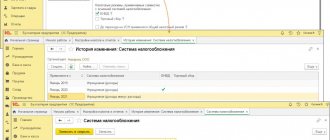What are cost calculation formulas?
Let's illustrate with an example what the problem is.
Imagine that a company purchases 1,000 chocolate bars at CU 30. every. The accounting entry will be like this:
- Debit. Inventories: CU 30,000 (1,000*30).
- Credit. Accounts payable: CU 30,000
This company then sells 200 chocolates at CU40. each. Wiring:
- Debit. Accounts receivable: CU 8,000 (200*40).
- Credit. Revenue from the sale of goods: CU 8,000
In addition, the company must reflect in its accounting the fact that some of the bars have left the warehouse. Accounting entry:
- Debit. Cost of sales: CU 6,000 (200*30).
- Credit. Inventories: CU6,000
In this very basic example, the company knew exactly what amount should have been recognized in cost of sales because the acquisition cost (purchase price in this case) was CU30. for 1 chocolate bar.
But what happens when a company buys candy bars at different prices?
For example, imagine that a company bought 100 bars at CU31, 150 bars at CU32.50, 200 at CU29. etc.
What is the cost of sales in this case?
This depends on the 'cost formula' or inventory valuation method the company uses. So there may be more than one correct answer.
What does IAS 2 Inventories require?
In fact, IAS 2 Inventories states that for:
- inventories that are not generally fungible; and
- for goods or services that are produced and allocated to specific projects,
Cost must be calculated for each unit of inventory.
[cm. IAS paragraph 2.23]
This is quite unusual in practice, but it does occur. For example, when the goods are exclusive and unique, such as jewelry, antiques or certain types of cars.
But, usually, goods are interchangeable (for example, large volumes of goods). In this case, IAS 2 allows the use of:
- FIFO , that is, the first-in-first-out method or FIFO, “first in - first out”; or
- Weighted average method .
[cm. IAS paragraph 2.25]
IAS 2 does not allow the use of LIFO (last-in-first-out). The LIFO method is permitted by US GAAP, and perhaps some other national accounting rules.
| Comparison of cost calculation formulas | ||
| FIFO | Weighted average cost | LIFO |
| IAS 2 allowed | IAS 2 allowed | IAS 2 not allowed |
| Oldest purchases sold first | Cost per unit of inventory = weighted average | Latest purchases sold first |
Now let's return to the example and explain all three formulas for calculating cost using the example of sales and purchases of chocolate.
FIFO Application Models
There are 2 types of FIFO method:
- standard (ordinary), which involves the calculation of incoming and consumable materials, and unused materials are taken into account once at the end of the month;
- modified (sliding), which assumes the reverse order of calculations - first, the balance of materials at a certain point in time is determined at the price of the last ones at the time of acquisition, and then the cost of inventories written off for production is calculated.
Example
A special additive is used in the production of Tekhnologiya LLC products. At the beginning of the month, the company’s accounting records the balance of the additive in the amount of 60 kg (the price of 1 kg is 245 rubles, the cost of the balance is 14,700 rubles).
Within a month, the warehouse received an additive for a total amount of 274,200 rubles:
- 1st arrival - 600 kg (254 rub./kg);
- 2nd entry - 300 kg (270 rub./kg);
- 3rd entry - 150 kg (272 rub./kg).
720 kg of additive were written off for production.
Calculation using the standard FIFO model:
1. Let's calculate the cost of the written-off additive:
- 60 kg from the balance at the beginning of the month (RUB 14,700);
- 600 kg from the 1st receipt (600 kg × 254 rub./kg = 152,400 rub.);
- 60 kg from the 2nd receipt (60 kg × 270 rub./kg = 16,200 rub.).
————————————————————
Total: 14,700 + 152,400 + 16,200 = 183,300 rubles.
2. Determine the cost and amount of remaining material at the end of the month:
14,700 + 274,200 − 183,300 = 105,600 rub.
60 + (600 + 300 + 150) − 720 = 390 kg.
Calculation using the modified FIFO model:
1. With a balance of 390 kg (240 kg from the 2nd receipt and 150 from the last), the cost of the additive remaining in the warehouse at the end of the month will be:
240 × 270 + 150 × 272 = 105,600 rub.
2. Calculation of the cost of the additive written off for production:
14,700 + 274,200 − 105,600 = 183,300 rub.
Conclusions from the considered example:
- the cost of written-off materials and balance are the same when using both FIFO models;
- with the second option, it is enough to accurately determine which materials from which batches make up the balance in the warehouse, and the cost of written-off materials is determined by calculation without necessarily being allocated to a specific batch;
- with the first option, you need to accurately determine from which batches the materials are written off and remain at the end of the month.
When to use the FIFO method
An example of the most successful use of this method is the write-off of perishable goods. We are talking about food products (vegetables, fruits, dairy products) or raw materials with a limited shelf life. To avoid spoilage, previously received supplies must be sold (or processed) first.
Write-off of materials using the FIFO method
The FIFO method (from English First In First Out) is also called the conveyor model.
In accordance with paragraph 19 of PBU 5/01, this method is based on the assumption that materials are written off for production in the sequence in which they were purchased. Materials from subsequent batches are not written off until the previous one is completely used up. With this method, materials released into production are valued at the actual cost of materials that were first in date of acquisition, and the balance of materials at the end of the month is valued at the cost of materials that were last in time of acquisition.
In the event that the first lots purchased in time are cheaper, and the subsequent ones are more expensive, the use of the FIFO method leads to the following result - materials are written off to production at a lower cost, accordingly, the cost of production is lower and the profit is higher.
If prices for materials tend to decrease, then, on the contrary, if the FIFO method is used, profit will decrease.
The literature suggests two methods for determining the cost of materials written off for production using the FIFO method.
1. First, materials are written off at the cost of the first purchased batch; if the quantity of written-off materials is greater than this batch, the second is written off, and so on. The balance of materials is determined by subtracting the cost of written-off materials from the total cost of materials received for the month (taking into account the balance at the beginning of the month).
2. The balance of materials at the end of the month is determined at the price of the most recent purchase. The cost of materials written off for production is determined by subtracting the resulting value from the total cost of materials received during the month (taking into account the balance at the beginning of the month).
Example.
At the beginning of the month, the remaining paint amounted to 100 cans at a price of 35-00 rubles per can.
The balance at the beginning of the month is: 100 x 35-00 = 3,500 rubles
Within a month we received:
1 batch: 120 cans at a price of 40-00 rubles per can;
2nd batch: 80 cans at a price of 45-00 rubles per can;
3rd batch: 100 cans at a price of 50-00 rubles per can.
The total cost of incoming paint is:
120 x 40-00 + 80 x 45-00 + 100 x 50-00 = 13,400-00 rubles
During the month, 270 cans of paint were written off for production, the balance at the end of the month was 130 cans.
1 option
A total of 270 cans of paint were written off, and first the balance at the beginning of the month (100 cans) was written off completely, then the first batch (120 cans) was written off. Since the total quantity is larger, the remaining quantity is written off from the second batch 270 – (100 + 120) = 50 cans
The cost of scrapped paint is:
100 x 35-00 + 120 x 40-00 + 50 x 45-00 = 10,550-00 rubles
The average cost of one can of scrapped paint is:
10 550-00 / 270 = 39-07 rubles
The cost of the remaining paint is:
(3,500-00 + 13,400-00) – 10,550-00 = 6,350-00 rubles
With this option, it is necessary to accurately determine which materials from which batches make up the balance at the end of the month, since they will be written off first next month.
The balance is:
From the second batch: 80 – 50 = 30 cans for the amount of 30 x 45-00 = 1,350-00 rubles;
The third batch remains at the end of the month in full: 100 x 50-00 = 5,000-00 rubles
Option 2
The balance at the end of the month is 130 cans, and the third batch (100 cans) is included in the balance in full, since this is not enough, 30 cans from the second batch are also included in the balance.
The value of the balance at the end of the month is:
100 x 50-00 + 30 x 45-00 = 6,350-00 rubles
The cost of scrapped paint is:
(3 500-00 + 13 400-00) – 6 350-00 = 10 550-00.
The average cost of one can of scrapped paint is:
10 550-00 / 270 = 39-07 rubles
From the examples given, it is clear that the cost of written-off materials and the balance are the same when using both options. With the second option, it is enough to accurately determine which materials from which batches make up the balance in the warehouse, and the cost of written-off materials is determined by calculation without necessarily being allocated to a specific batch, whereas with the first option, it is necessary to accurately determine from which batches the materials are written off and remain at the end month. This option becomes very labor-intensive if materials are purchased quite frequently during the month.
FIFO write-off method
In practice, it is rarely fashionable to observe the purchase of necessary products or materials of a homogeneous group that are necessary for work for the same long time. Typically, resources come from several manufacturing companies and have different costs. High turnover makes it difficult to track the cost of certain goods used in production activities.
According to the law, you can write off funds for expenses in the process of disposal in several ways. Let's look at everything for a better understanding. According to “Accounting for inventories” (PBU 5/01), accounting can use several methods:
- Focus on the cost of individual units. This method is good when accounting for expensive goods, when it is possible to track the disposal of all batches of goods, as well as inventories.
- Focus on average cost. Total costs are calculated as the ratio of the average cost (the price of the remaining products and the amount of goods received) and the total quantity, which is determined in a similar way.
- The FIFO method, when goods from stocks received earlier are consumed first, first in time.
The FIFO method is often called the conveyor method, that is, the product that was originally received is disposed of.
Write-off according to FIFO is carried out according to the previous scheme, namely, the disposal of homogeneous inventories is carried out sequentially, in the order of their receipt at warehouses. Therefore, goods from subsequent receipts are not withdrawn until the previously received ones are fully used up.
The FIFO method involves writing off for household needs or for production at the cost of inventories upon the fact, which were received first in order. Consequently, the cost of goods from inventory that were received later and not consumed is included in the price of residual goods at the end of the period.
FIFO method in 1C UT
In 1C Trade Management, the FIFO method is used:
- According to classic patrionic accounting, when the system stores information about the price of all batches received for all receipts. The principle also encourages the disposal of goods in a sequential order, starting with the earliest batch.
- With advanced cost accounting analytics, when the calculation of product balance is expressed quantitatively. Then comes the determination of the valuation of the balance at the end of the month, the weighted average, equal to the calculation of prices according to FIFO.
At the same time, the sizes and prices for the remaining products are lined up in order: from the last batch, because, following the FIFO logic, the initially received goods have already been written off.
Next, the volumes of goods removed from the warehouse during the month are determined. The price of received goods is determined, taking into account the price of the initial goods from the balance, then the price of the remaining goods at the end of the month, which was calculated according to the FIFO principle, is subtracted from this indicator. This indicator is the cost of writing off monthly production.
The following formulas are also used:
- The write-off price of a unit of goods = the price of products (during the month)/number of products disposed of during the month.
- Cost of shipment = unit cost of goods X number of goods to be written off.
FIFO method in WMS system
The WMS system helps solve warehouse management problems and automates warehouse operations.
Main functions of WMS:
- Helps place goods around the perimeter of the warehouse;
- Issues tasks;
- Manages the selection of goods;
- Participates in personnel supervision;
- Automates work regarding replenishment of residual goods from the warehouse.
One of the methods used by the system in question is FIFO.
According to this method, goods from the first batch are shipped first, then subsequent ones, thus opening access to the first categories from the list occurs after analyzing all subsequent goods. This principle also applies to clients, that is, they serve the client who arrived earlier than others.
Example of calculation using the FIFO method
Table 1 presents the initial data for calculating the write-off of inventories.
From Table 1 it can be seen that the balance of inventories at the beginning of the month (as of 02/01/2017) is 600 kg at a price of 100 rubles. for 1 kg, i.e. the balance in the warehouse is 60,000 rubles. (600 kg * 100 rub.).
During the month, resources were received in four batches: 02/05/2017, 02/15/2017, 02/25/2017, 02/28/2017.
Each batch arrived within a month at its own price: 02/05/2017 the arrival was 120 kg at a price of 105 rubles. for 1 kg, 02/15/2017 175 kg were received at a price of 118 rubles. for 1 kg, 02/25/2017 - arrival of 201 kg at a price of 122 rubles. for 1 kg, 02/28/2017 - arrival of 136 kg at a price of 132 rubles. for 1 kg.
The total amount of inventory received is 632 kg (120 + 175 + 201 + 136) for a total amount of 75,724 rubles. (12600 + 20650 + 24522 + 17952).
Table 1
| Index | Quantity, kg | Price per 1 kg, rub. | Amount, rub. |
| Balance as of 02/01/2017 | 600 | 100 | 60 000 |
| Receipt of everything, including: | 632 | — | 75724 |
| 05.02.2017 | 120 | 105 | 12 600 |
| 15.02.2017 | 175 | 118 | 20 650 |
| 25.02.2017 | 201 | 122 | 24 522 |
| 28.02.2017 | 136 | 132 | 17 952 |
| Used in a month | 830 | — | — |
During the month, 830 kg of reserves were consumed for the needs of the business entity.
Write-off of the cost of consumed inventories using the FIFO method is reflected in Table 2.
Write-off using this method occurs in the following order: first of all, materials are written off at the price of inventories remaining in the warehouse at the beginning of the reporting period (in our case, 600 kg at a price of 100 rubles per 1 kg).
During this reporting period, 830 kg of raw materials were consumed, i.e., if 600 kg are written off, another 230 kg (830 – 600) remains to be written off. Then the materials are written off at the price of the first batch (120 kg for 105 rubles).
Since another 120 kg have been written off, it remains to write off another 110 kg (230 – 120). Then the raw materials are written off at the price of the second batch of receipt, i.e. 02/15/2017 (at a price of 118 rubles per 1 kg).
110 kg are written off at a price of 118 rubles, i.e. in the amount of 110 * 118 = 12980 rubles. The total amount of inventory written off is 830 kg (600 +120 + 110). The total amount of inventory written off using the FIFO method is RUB 85,580. (60000 +12600 + 12980).
table 2
| Index | Quantity, kg | Price per 1 kg, rub. | Amount, rub. |
| Written off per month, incl. | 830 | — | 85580 |
| Balance as of 02/01/2017 | 600 | 100 | 60 000 |
| 05.02.2017 | 120 | 105 | 12 600 |
| 15.02.2017 | 110 | 118 | 12980 |
The balance at the end of the reporting period with this method remains at the price of the last batches (Table 3). In our example, from the batch received on February 15, 2017, the balance remains 65 kg (175 – 110) at a price of 118 rubles. for 1 kg for a total amount of 7670 rubles. (65 x 118). The remainder also includes the entire batch (201 kg), which arrived on 02/25/2017 at a price of 122 rubles. for 1 kg for a total amount of 24,522 rubles. (201 kg x 122 rub.). And there is also a remaining batch that arrived on February 28, 2017 (136 kg) at a price of 132 rubles. for 1 kg, i.e. for a total amount of 17,952 rubles. (136 kg x 132 rub.). The total balance at the end of the month, i.e. as of 02/28/2017, is 402 kg for a total amount of 50,144 rubles.
Table 3
| Index | Quantity, kg | Price per 1 kg, rub. | Amount, rub. |
| Balance as of 02/28/2017 | 402 | — | 50144 |
| 15.02.2017 | 65 | 118 | 7670 |
| 25.02.2017 | 201 | 122 | 24 522 |
| 28.02.2017 | 136 | 132 | 17 952 |
An example of inventory accounting according to IFRS using various cost formulas.
ABC, a candy and chocolate distributor, made a number of purchases of a new chocolate bar during 20×1:
- January 10: 1,000 units at 28;
- February 14: 1,500 units at CU28.20;
- March 17: 3,000 units at CU28.40; and
- June 18: 2,500 units at CU28.55
Because this is a new product and a major advertising campaign is planned after 1 July, ABC Company sold only one batch of 4,200 units to its largest customer for a total of CU159,600 on 2 May 20×1.
You need to calculate the inventory value of a new product, ABC, at 30 June 20x1 (excluding other components of purchasing costs).
Solution.
As mentioned above, the answer greatly depends on the costing formula used.
Although we clearly know how much inventory was received at the time of purchase, the cost of inventory shipped from the warehouse at the time of sale must be calculated using one of the costing formulas above.
In addition, the total sale price is CU159,600. is given here only to confuse you. It is NOT relevant for calculating the cost of inventory in a warehouse - it is the selling price, not the cost.
Regardless of the cost calculation formula used, we can calculate the number of chocolate units in stock (warehouse balances):
1,000 + 1,500 + 3,000 + 2,500 – 4,200 = 3,800 units.
Now we use various costing formulas to determine the cost of these 3,800 units.
How to account for the cost of inventory using the FIFO method?
This method can be called "chronological".
The reason is that using this method you "sell" the items from the warehouse in the same order in which they were purchased.
In our example, when ABC sold 4,200 units of chocolate, we assume that, using the FIFO method, the following items left the warehouse:
- All units purchased on January 10 - 1,000 units at CU28.
- All units purchased on February 14 - 1,500 units at CU28.20, and
- Balance of 1,700 units (4,200 - 1,000 - 1,500), purchased on March 17 at CU 28.40.
You can calculate the cost of sales at the time of sale, but that is not the question.
The question is, what will be the cost of the inventory of chocolate bars on June 30, 20×1?
If you assume that the oldest purchases leave the warehouse first, it is logical to assume that the latest purchases will remain.
There are 3,800 units of inventory in the warehouse:
- 2,500 units from purchase on June 18 at CU 28.55. - this will amount to CU 71,375; and
- the remaining 1,300 units are from the purchase on March 17 at CU 28.40. - this will amount to CU 36,920.
Thus, the total value of chocolate inventory, calculated using the FIFO cost formula, as of June 30 is CU108,295.
How to account for the cost of inventory using the LIFO method?
This method is very similar to FIFO, with one big difference: here you assume that when selling, the most recent purchases are leaving the warehouse .
As a result, the oldest purchases remain in the warehouse until all inventory is sold.
This is closely related to the main reason why LIFO is prohibited by IAS 2.
IFRS standards largely focus on balance sheet metrics. Every amount on your balance sheet should reflect current market and economic conditions as closely as possible, and that is NOT what the LIFO method does.
Why?
Because when you write off the most recent purchases at the most recent prices to cost of sales and keep the oldest purchases in your warehouse and on your balance sheet, the value of your inventory on your balance sheet will reflect the cost of the oldest purchases.
In other words, the LIFO method records the obsolete cost of inventory. This situation is only true in a market with very stable (frozen) prices and in a business with slow inventory turnover.
Additionally, LIFO tends to increase cost of sales .
Now let's look at our example using the LIFO cost formula.
In this case, you need to make approximately the same calculation as for the FIFO method, but in reverse order, for old purchases.
In addition, sales need to be taken into account. When selling, the cost of the chocolate bars was calculated based on the latest purchases available in the warehouse.
Therefore, the 4,200 units sold on May 2 were written off from the warehouse from the following purchases:
- 3,000 units from the purchase on March 17 at CU 28.40. And
- 1,200 units from the purchase on February 14 at CU 28.70.
Thus, the 3,800 units remaining in inventory at June 30th include:
- 1,000 units from purchase on January 10 at CU 28.00 — in the amount of CU 28,000;
- 300 units from the purchase on February 14 at CU 28.70. — in the amount of CU 8,860 Remember that you sold 1,200 units of this purchase on May 2;
- the remaining 2,500 units are from the purchase on June 18 at CU 28.55, in the amount of CU 71,375.
The total value of inventories as at 30 June using the LIFO method is CU107,875.
The table below shows the contrast between the FIFO and LIFO methods:
| FIFO | date | Purchase | LIFO |
| January 10 | 1 000 * 28 | 1 000 * 28 | |
| The 14th of February | 1 500 * 28,20 | 300 * 28,20 | |
| 1 300 * 28,40 | March 17 | 3 000 * 28,40 | |
| 2 500 * 28,55 | June 18 | 2 500 * 28,55 | 2 500 * 28,55 |
| Total: 3,800 units at cost CU 108,295 | Total: 3,800 units at cost CU 107,835 |
Problems using LIFO, FIFO, average cost methods with solutions
Task 1. An organization specializing in assembling tablets and computers from purchased microcircuits, in 2021 launched the process of manufacturing computers of a more modern type, the sale of which was carried out unevenly throughout the year, so some finished computers increased stocks of finished products. Let's say that in 2021 the organization manufactured 4 similar computers. However, although these computers are the same, the cost of producing each computer is different due to increased prices for personnel wages and components.
| Product | Cost, rubles |
| Computer 1 | 13500 |
| Computer 2 | 12000 |
| Computer 3 | 14000 |
| Computer 4 | 15100 |
| Total | 54600 |
Suppose 2 computers were sold to clients.
1) Determine the cost of computers sold and the cost of inventory using three methods - FIFO, LIFO, average cost.
The solution of the problem:
The LIFO method (today it is used mainly in logistics; changes have been introduced in tax and accounting accounting, according to which this method is no longer used for accounting for materials):
The cost of two computers sold is determined from the cost of the computers that were manufactured last: 15,100 + 14,000 = 29,100 (rubles).
The cost of inventories at the end of the year will be 54600-29100=25500 (rubles).
FIFO method:
The cost of computers sold will be determined based on the costs of manufacturing the first computers:
13500+12000=25500 (rubles)
The cost of inventory at the end of the period will be 54600-25500=29100 (rubles).
Average cost method:
The average unit cost is 54600/4=13650 (rubles), the cost of two computers will be 13650*2=27300 (rubles).
The cost of inventory at the end of the period will be equal to: 54600-27300=27300 (rub).









